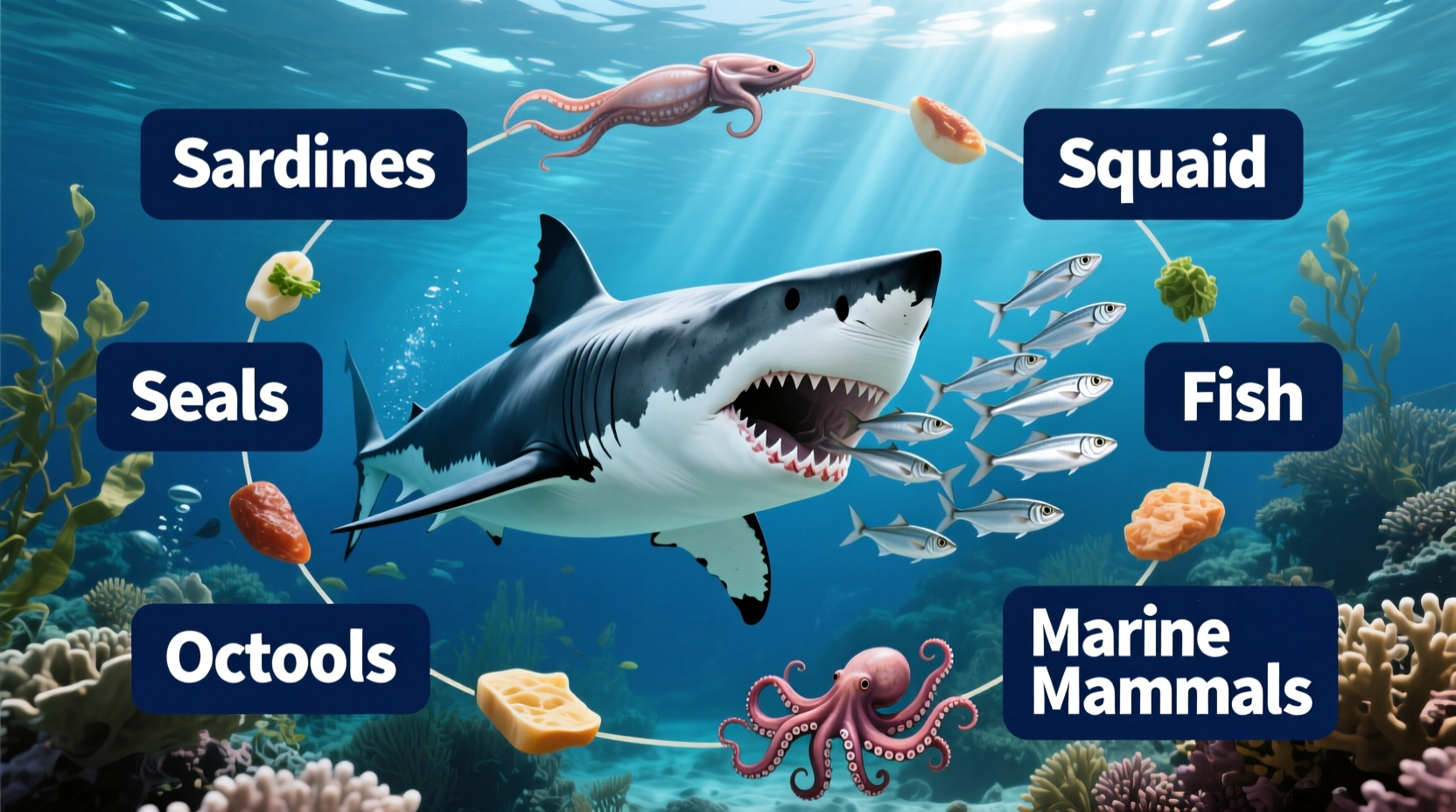Understanding Shark Diets: More Than Just Fish
When you ask what does shark eat for food, the answer reveals a complex feeding hierarchy across more than 500 shark species. Unlike the common misconception that all sharks hunt humans, most have specialized diets perfectly adapted to their ecological niche. Marine biologists at the National Oceanic and Atmospheric Administration (NOAA) confirm that sharks serve as crucial regulators in ocean food webs, with their feeding habits preventing any single species from dominating marine environments.
How Different Shark Species Fuel Their Survival
Shark feeding strategies have evolved over 400 million years, creating remarkable dietary specialization. While all sharks are carnivores (except filter feeders), their hunting techniques and prey selection vary dramatically based on physical adaptations:
| Shark Species | Primary Diet | Unique Feeding Adaptation | Feeding Frequency |
|---|---|---|---|
| Great White | Seals, sea lions, fish | Countershading camouflage, explosive speed | Every 3-6 days |
| Tiger Shark | Fish, turtles, seabirds, dolphins | Crescent-shaped teeth for crushing shells | Daily to weekly |
| Hammerhead | Stingrays, fish, squid | Wide-set eyes for binocular vision | Every 2-4 days |
| Whale Shark | Plankton, krill, small fish | Filter-feeding system with gill rakers | Continuous feeding |
| Bull Shark | Fish, other sharks, dolphins | Ability to tolerate freshwater environments | Daily |
The Evolutionary Timeline of Shark Feeding
Shark feeding behaviors have evolved through distinct phases over millions of years:
- 400 million years ago: Early sharks like Cladoselache had simple jaws for grasping small fish
- 200 million years ago: Mesozoic sharks developed specialized teeth for crushing shells
- 66 million years ago: Post-dinosaur extinction, sharks evolved to fill vacant predator niches
- 16 million years ago: Great white ancestors developed serrated teeth for cutting marine mammals
- Present day: Modern sharks exhibit highly specialized feeding strategies documented by Florida Museum of Natural History researchers
How Sharks Find and Consume Their Prey
Sharks employ a sophisticated sensory toolkit to locate food:
- Electroreception: Ampullae of Lorenzini detect electrical fields from prey muscles
- Smell: Can detect one part per million of blood in seawater from miles away
- Lateral line: Senses water vibrations from swimming prey
- Vision: Most have excellent low-light vision for hunting at depth
When hunting, sharks use specific techniques based on species. Great whites employ ambush tactics from below, while hammerheads pin stingrays against the seafloor. Filter feeders like whale sharks swim with mouths open, filtering plankton through specialized gill structures. According to marine biologists at Smithsonian National Museum of Natural History, sharks typically consume 0.5-3% of their body weight daily, with larger species eating less frequently but in larger quantities.

Sharks in Captivity vs. Wild: Dietary Differences
Understanding what does shark eat for food requires examining context boundaries between natural and controlled environments:
- Wild sharks: Consume varied, natural diets requiring hunting behaviors
- Aquarium sharks: Receive prepared meals (thawed fish, squid) lacking hunting challenges
- Research findings: Captive sharks show reduced activity levels without hunting stimulation
- Nutritional impact: Wild sharks obtain complete nutrition from whole prey items
The Marine Biological Association notes that captive feeding programs must carefully replicate nutritional profiles found in natural prey to maintain shark health. This context matters when interpreting dietary studies—what sharks eat in controlled environments differs significantly from their natural feeding behaviors.
Debunking Common Shark Diet Myths
Several misconceptions persist about shark feeding habits:
- Myth: Sharks constantly hunt and eat large quantities daily Reality: Most sharks eat infrequently, with great whites consuming meals every 3-6 days
- Myth: All sharks eat humans Reality: Fewer than 10 human fatalities occur annually from shark encounters worldwide
- Myth: Sharks only eat meat Reality: Filter feeders consume plankton, and some species occasionally ingest non-food items
- Myth: Sharks will eat anything they encounter Reality: Most sharks are selective feeders with specialized diets
Why Shark Diets Matter for Ocean Health
As apex predators, sharks maintain marine ecosystem balance through their feeding habits. Research published in Science Advances shows that declining shark populations lead to:
- Overpopulation of mid-level predators
- Decline in commercially important fish species
- Altered seafloor habitats from uncontrolled prey behavior
- Reduced genetic fitness in prey populations
Understanding what does shark eat for food isn't just academic—it's crucial for marine conservation efforts. When shark populations decline, entire food webs become destabilized, affecting fisheries and coastal communities worldwide.











 浙公网安备
33010002000092号
浙公网安备
33010002000092号 浙B2-20120091-4
浙B2-20120091-4